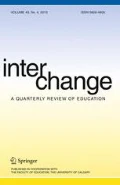Abstract
Pre-verbal, sensory-motor intelligence progresses to where the child needs some kind of representation for further cognitive progress and where his cognitive structures make such representation possible. Observational research shows that early symbolic behaviour occurs only after objects have been endowed with certain physical and conventional properties and after certain kinds of creative organizational behaviour have appeared. The beginnings of language can be studied as part of representational behaviour and may show such object-and subject-oriented duality in lexical and syntactic components.
Résumé
L'intelligence pré-verbale, sensori-motrice, progresse jusqu'au point où une représentation devient nécessaire pour que le développement cognitif puisse continuer, et où la structure cognitive rend possible l'avènement de la fonction symbolique. Des recherches montrent que des conduites symboliques s'installent après l'attribution aux objets de certaines propriétés physiques et conventionnelles et l'apparition d'activités organisatrices. Le langage se présente comme une des manifestations de la fonction symbolique et peut refléter une orientation bipolaire (vers les objets ou vers le sujet) dans ses composantes lexiques et syntaxiques.
Similar content being viewed by others
References
Beilin, H., & Spontak, G. Active-passive transformations and operational reversibility. Paper presented at meeting of S.R.C.D., Santa Monica, Calif., March 1969.
Bellugi, U. H. The acquisition of the system of negation in children's speech. Unpublished doctoral dissertation, Harvard University, 1967.
Brown, R. The first sentences of child and chimpanzee. Mimeographed paper, Harvard University, 1969.
Cohen, M. Sur l'étude du langage enfantin.Enfance, 1969, Mai–Sept., 231–272. (Reprint ofEnfance, 1952,5 (3).)
Francis, H. Structure in the speech of a 2 1/2 year old.British Journal of Educational Psychology, 1969,39, 291–301.
Furth, H. C.Piaget and knowledge. Englewood Cliffs, N.J.: Prentice-Hall, 1969.
Luquet, G. H.Le dessin enfantin. Neuchâtel: Delachaux et Niestlé, 1967.
Piaget, J.La formation du symbole chez l'enfant. Neuchâtel: Delachaux et Niestlé, 1946.
Piaget, J., & Inhelder, B.L'image mentale chez l'enfant. Paris: Presses Universitaires de France, 1966.
Piaget, J., & Inhelder, B. The gaps in empiricism. In A. Koestler (Ed.),Beyond reductionism. New York: Hutchinson, 1969. Pp. 118–148.
Schlesinger, I. M. Production of utterances and language acquisition. In D. I. Slobin (Ed.),The ontogenesis of grammar. New York: Academic Press, in press.
Sêchehaye, A.Essai sur la structure logique de la phrase. Paris: Champion, 1926.
Stern, W.Psychologie der frühen Kindheit. Leipzig: Quelle und Meyer, 1914.
Vygotsky, L. S.Thought and language. Cambridge, Mass.: MIT Press, 1962.
Author information
Authors and Affiliations
Rights and permissions
About this article
Cite this article
Sinclair, H. The transition from sensory-motor behaviour to symbolic activity. Interchange 1, 119–126 (1970). https://doi.org/10.1007/BF02214682
Issue Date:
DOI: https://doi.org/10.1007/BF02214682




